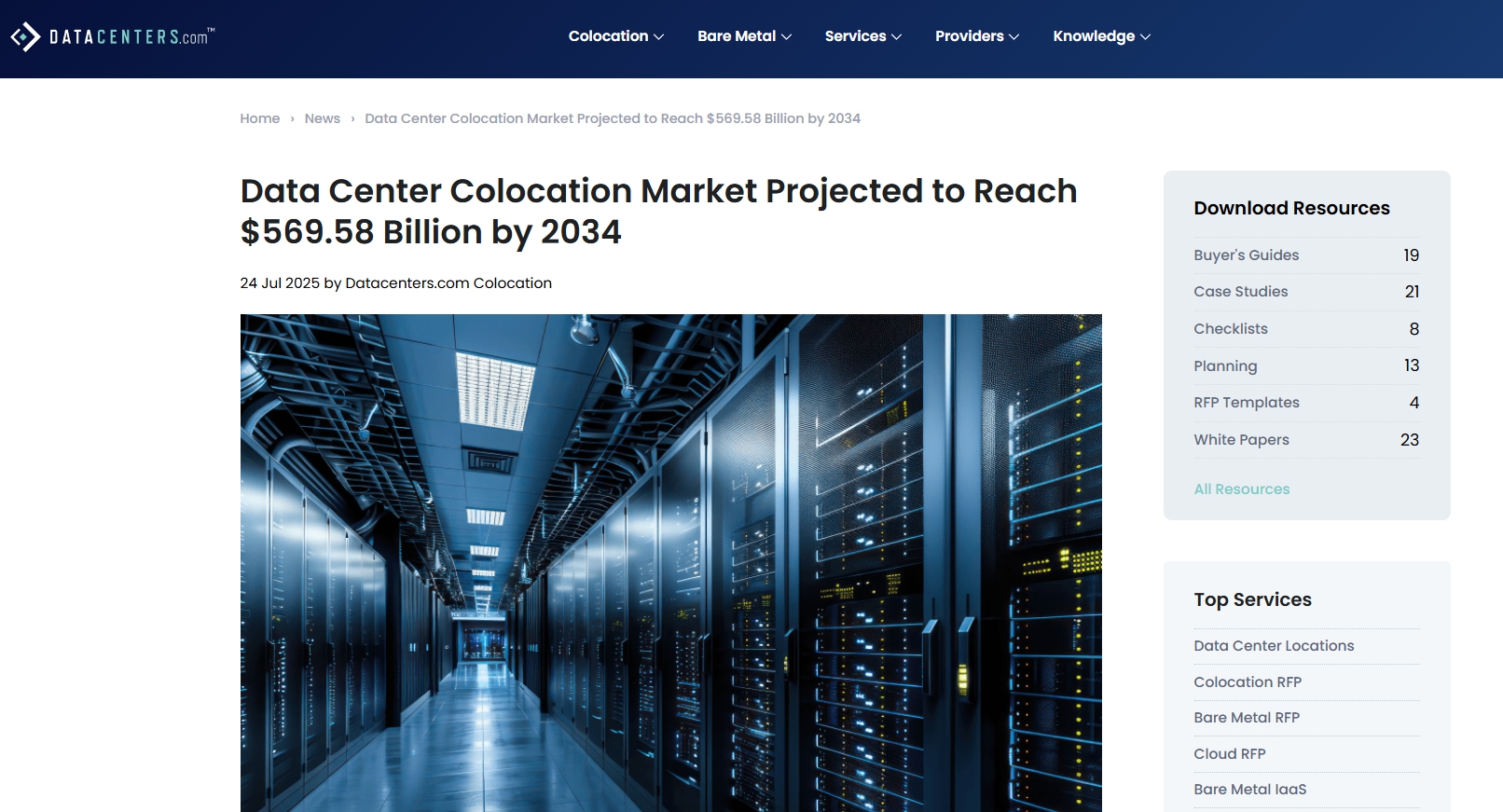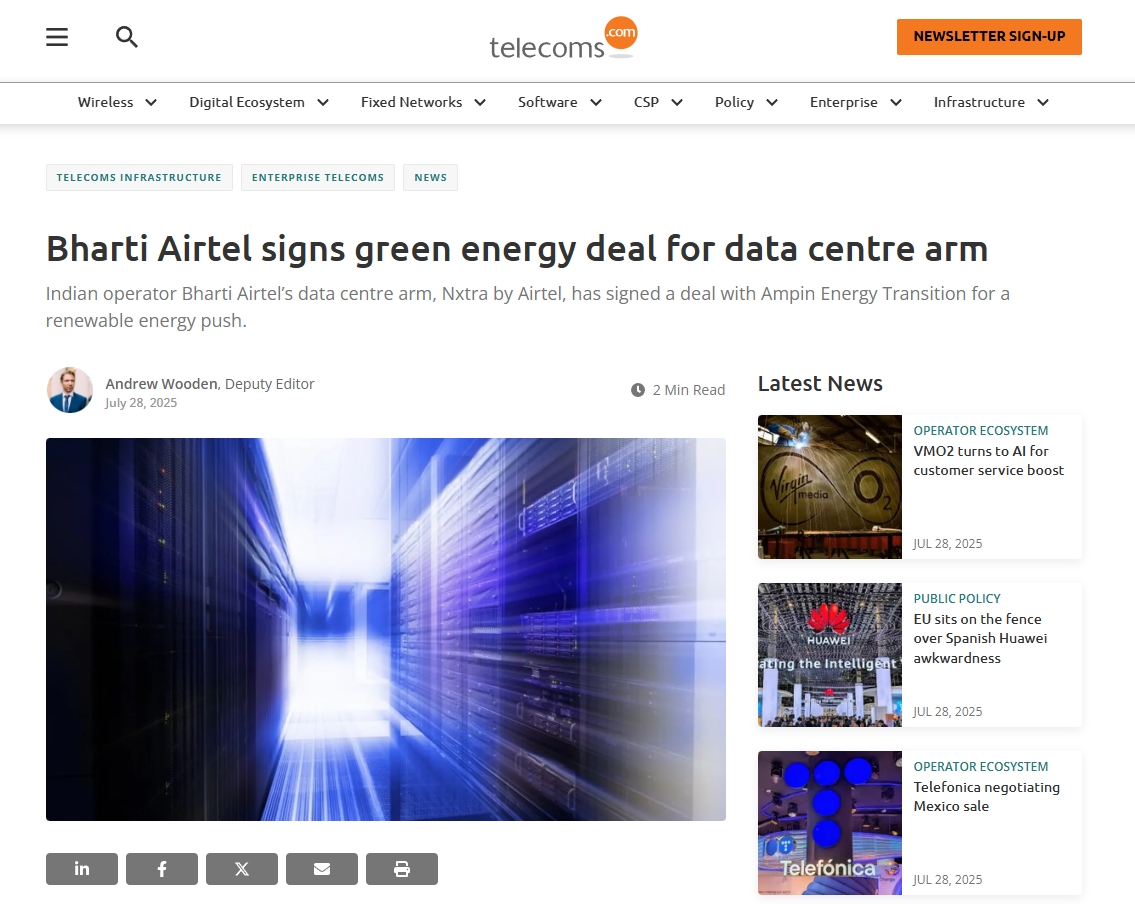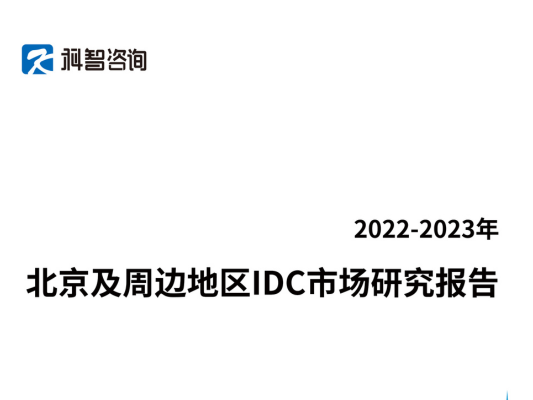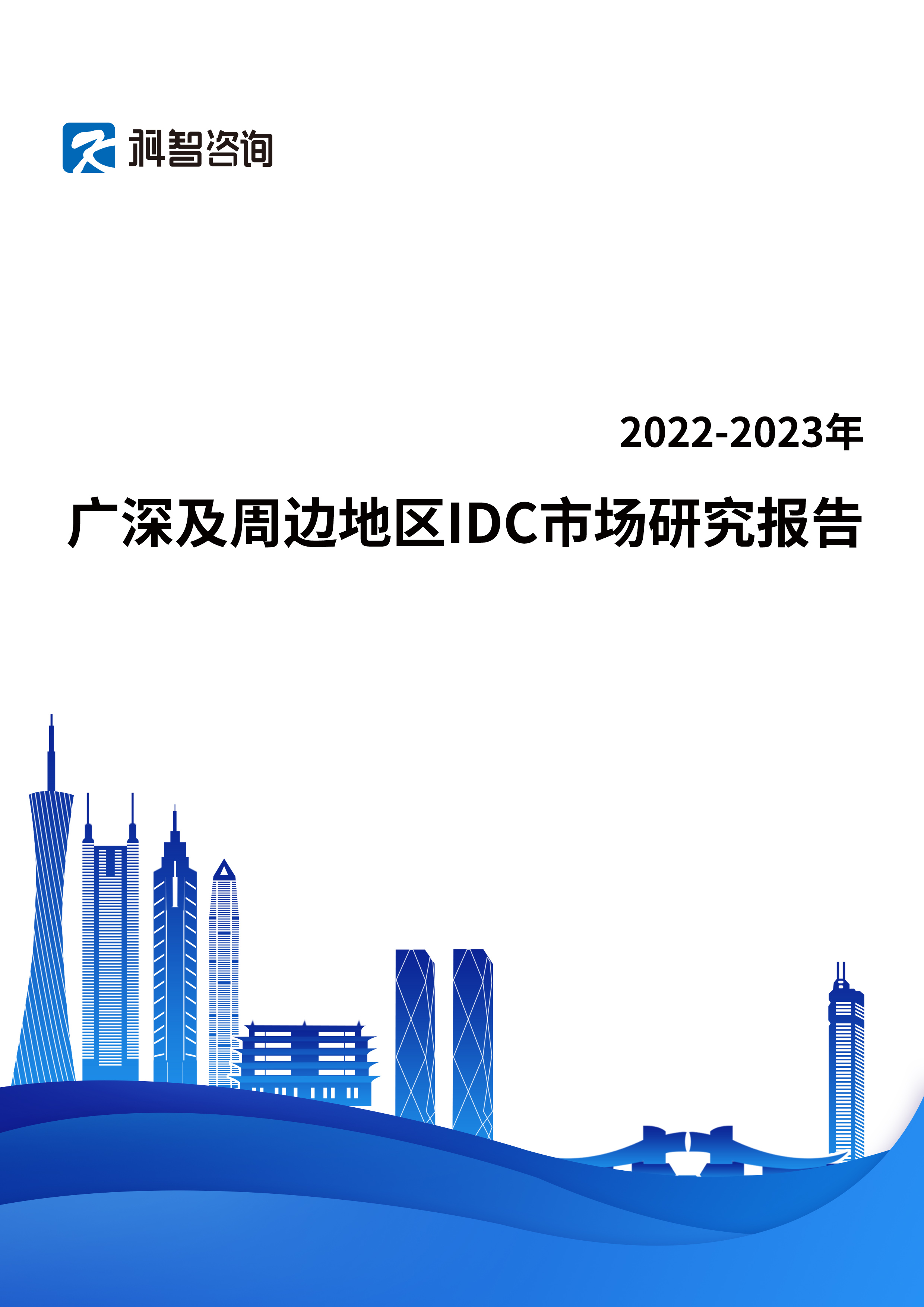Colocation’s Reinvention in the Age of AI and Edge
A decade ago, data center colocation was often seen as a middle ground—a compromise between on-premises control and cloud agility. But in 2025, colocation is undergoing a radical transformation. Once a tactical stopgap, it’s now a strategic pillar of the modern digital infrastructure stack.
New research forecasts the global colocation market will reach $569.58 billion by 2034, growing at a compound annual growth rate (CAGR) of 13.2% from 2024. This explosive trajectory reflects how colocation has evolved to meet the demands of hyperscalers, AI startups, fintech firms, and enterprises embracing hybrid models.
Far from fading into irrelevance, colocation is becoming the foundational layer for sovereign infrastructure, AI model deployment, latency-sensitive workloads, and resilient multicloud strategies.
Understanding the Colocation Model in 2025
At its core, colocation remains simple: a company rents physical space—cabinets, cages, or suites—within a larger, professionally managed data center facility. Tenants bring their own servers and networking gear, while the provider supplies:
Power
Cooling
Network connectivity
Physical security
Redundant systems
But today’s colocation offerings are vastly more sophisticated than their 2015 predecessors. In 2025, colocation includes:
On-site cloud connectivity (AWS Direct Connect, Azure ExpressRoute, etc.)
Bare metal-as-a-service layers
AI-ready rack density (30kW+ per rack)
Liquid cooling support
Energy usage dashboards for ESG compliance
Cross-connect marketplaces and software-defined interconnects
This evolution has made colocation attractive not only to mid-sized enterprises—but also to some of the biggest players in tech.
Drivers of Colocation’s Billion-Dollar Growth
Several macro trends are fueling this colocation renaissance:
1. AI Infrastructure Demand
Training and serving large language models (LLMs), diffusion models, and multimodal systems requires high-density, low-latency compute. Hyperscale cloud alone can’t absorb the demand. Colocation provides a scalable, power-efficient alternative that’s GPU-ready.
2. Cloud Cost Optimization
As cloud bills rise and predictability decreases, enterprises are offloading stable workloads to colocation sites—especially databases, object stores, and compliance-heavy applications. Owning hardware in a colo environment offers better performance-to-cost ratios.
3. Sovereign and Regulated Workloads
New data protection laws in the EU, India, Brazil, and the Middle East require citizen data to reside within national borders. Colocation lets companies control physical data placement, comply with sovereignty rules, and audit infrastructure down to the rack.
4. Multicloud and Edge Adoption
With companies spreading workloads across AWS, Azure, Google Cloud, Oracle, and private clouds, colocation acts as a neutral aggregation point. It enables:
Unified network egress
Cross-cloud caching
Direct interconnects
Global load balancing
Edge deployments are also co-locating in regional POPs and aggregation zones.
5. ESG and Power Efficiency Mandates
Modern colocation facilities use advanced cooling, renewable energy PPAs, and water reclamation systems. This helps customers meet internal ESG targets without building their own compliant infrastructure.
Key Industry Segments Leading the Expansion
Colocation’s boom is being driven by several high-demand sectors:
Artificial Intelligence: Startups, research labs, and enterprises need dense, affordable GPU racks close to their users.
Financial Services: Colocation near exchanges and banking hubs enables ultra-low latency and regulatory compliance.
Media and Gaming: Real-time rendering, game server hosting, and streaming platforms benefit from edge-optimized colo sites.
Healthcare: HIPAA-compliant infrastructure with physical data residency is easier to achieve with dedicated racks.
Telecom: 5G rollouts rely on colocation to extend compute and cache capacity closer to cell towers.
Hyperscalers Are Using Colo Too
Ironically, some of colocation’s biggest customers in 2025 are hyperscalers themselves. Companies like AWS, Microsoft, and Google are:
Leasing entire buildings inside major colocation campuses
Dropping pre-fabricated GPU pods into shared spaces
Using colo sites to support sovereign cloud regions
Offloading lower-tier workloads to focus hyperscale capacity on AI
This hybrid model—where hyperscalers extend into colocation space—is blurring traditional lines. It reflects how demand is outpacing their own build cycles.
Colocation and the AI Supply Chain
AI infrastructure depends on:
Chip availability
Power access
Fiber interconnects
Legal data localization
Colocation sites are becoming AI supply chain enablers. Leading facilities now offer:
H100 and MI300X ready power/cooling designs
Immersion-ready data halls
Hardware procurement and deployment services
AI workload orchestration integrations
Some providers even offer “AI rooms”—dedicated spaces with modular power and liquid cooling loops for customers deploying clusters of 8–64 GPUs at a time.
Geography of Growth
While North America remains the largest market, the fastest colocation growth is happening in:
Southeast Asia: Singapore, Jakarta, Kuala Lumpur
Middle East: Riyadh, Abu Dhabi, Tel Aviv
Europe: Warsaw, Madrid, Stockholm, Milan
Africa: Nairobi, Lagos, Cape Town
Latin America: São Paulo, Santiago, Mexico City
These regions are investing in digital sovereignty and building interconnect-rich, climate-optimized, and sovereign-aligned colocation campuses.
The Evolving Business Model
Today’s colocation providers aren’t just landlords—they’re strategic partners. Services in 2025 often include:
Deployment automation and “rack & roll” provisioning
Fully managed smart hands and remote support
Software-defined interconnection (SDI)
Billing APIs and usage visibility for finance teams
AI-based workload and cooling optimization
The colocation value chain is also expanding to include hardware resale, GPU marketplaces, and green compute credits.
Investor and M&A Activity
Private equity and infrastructure funds are pouring into colocation. Recent deals include:
DigitalBridge acquiring multiple campuses from T5 and Vantage
EQT-backed EdgeConneX expanding into India and Brazil
Blackstone investing in modular colocation startups in Europe
M&A activity is expected to continue as regional providers consolidate and hyperscaler demand fuels premium valuations.
Challenges and Constraints
Even with this growth, colocation isn’t without headwinds:
Power and land constraints in major metros
Talent shortages in specialized facilities management
Long lead times for high-capacity transformers and switchgear
Pressure to prove sustainability claims with hard data
Operators that succeed will be those who can scale capacity while maintaining ESG credibility, customer flexibility, and ecosystem connectivity.








